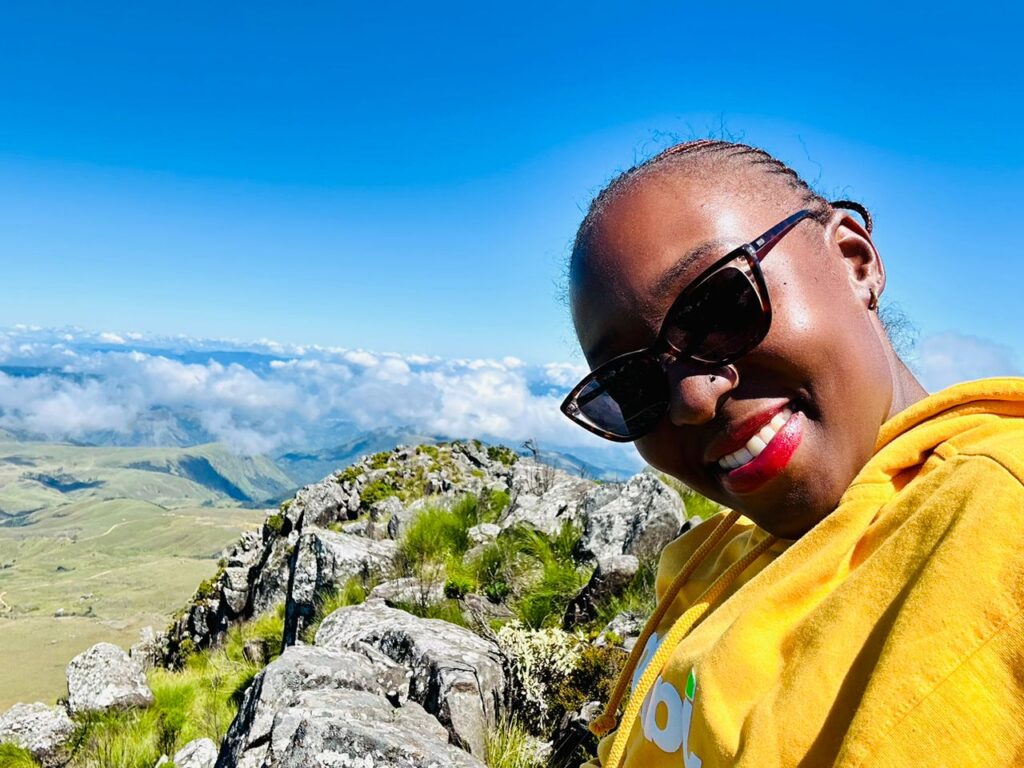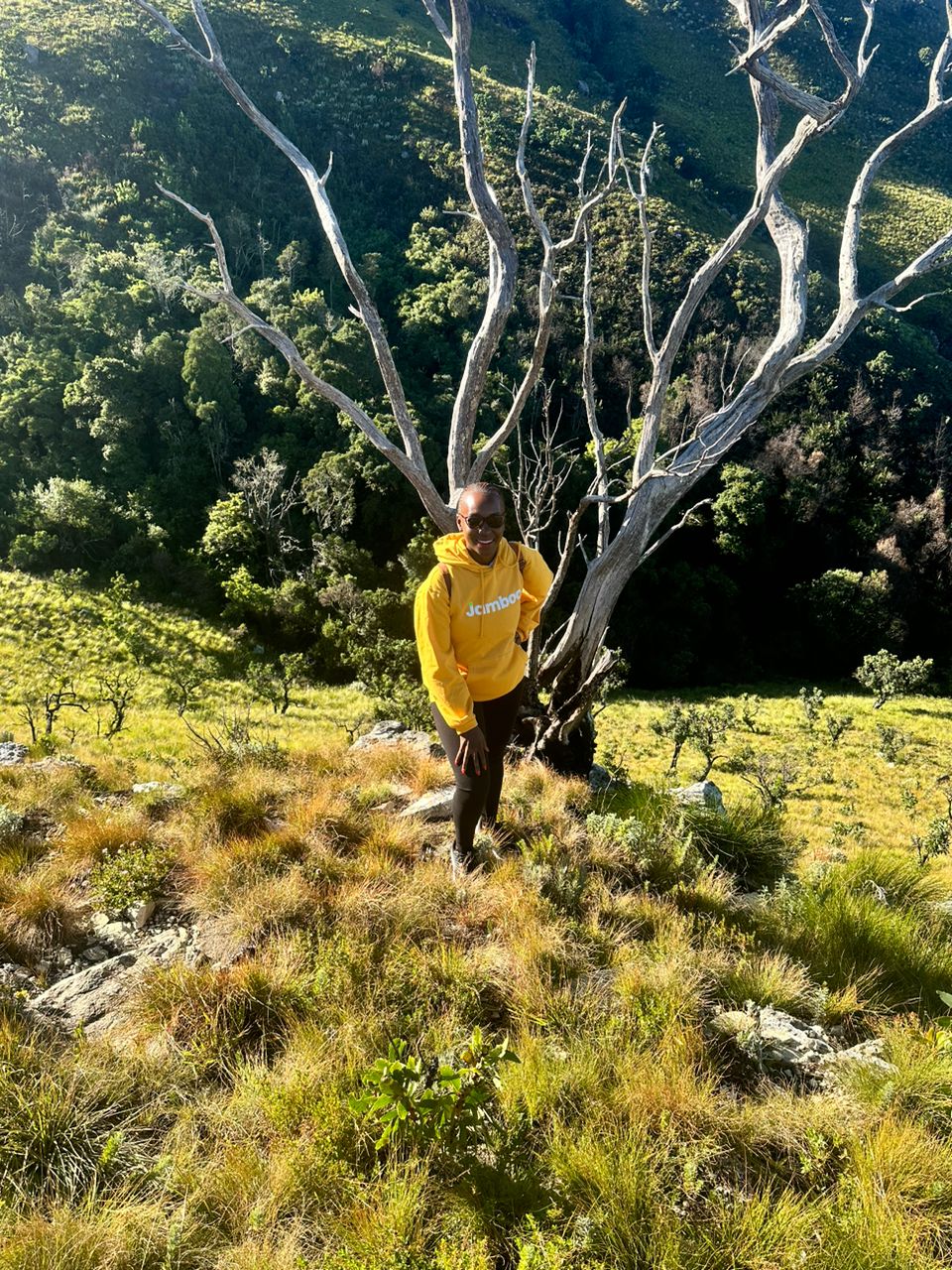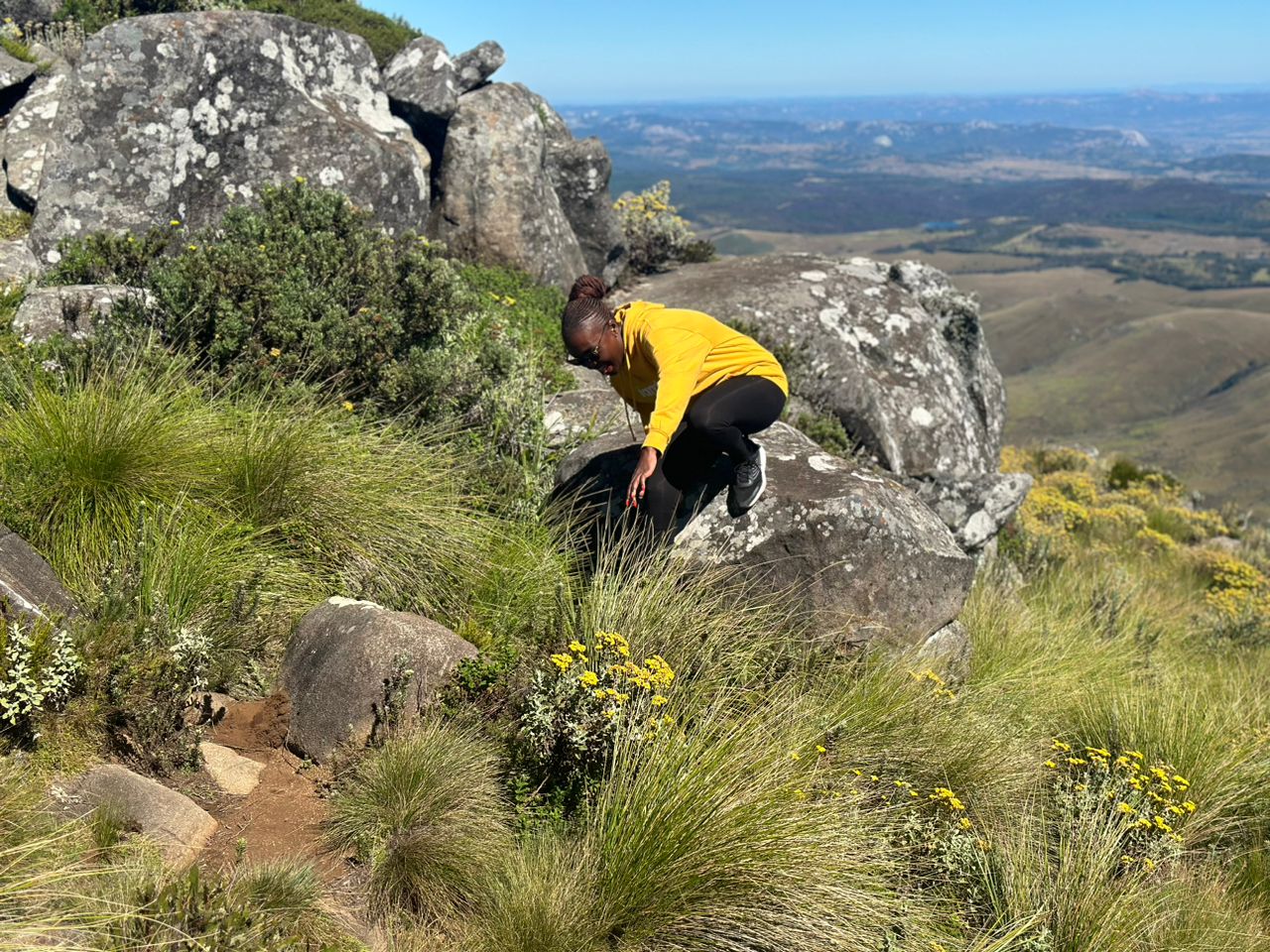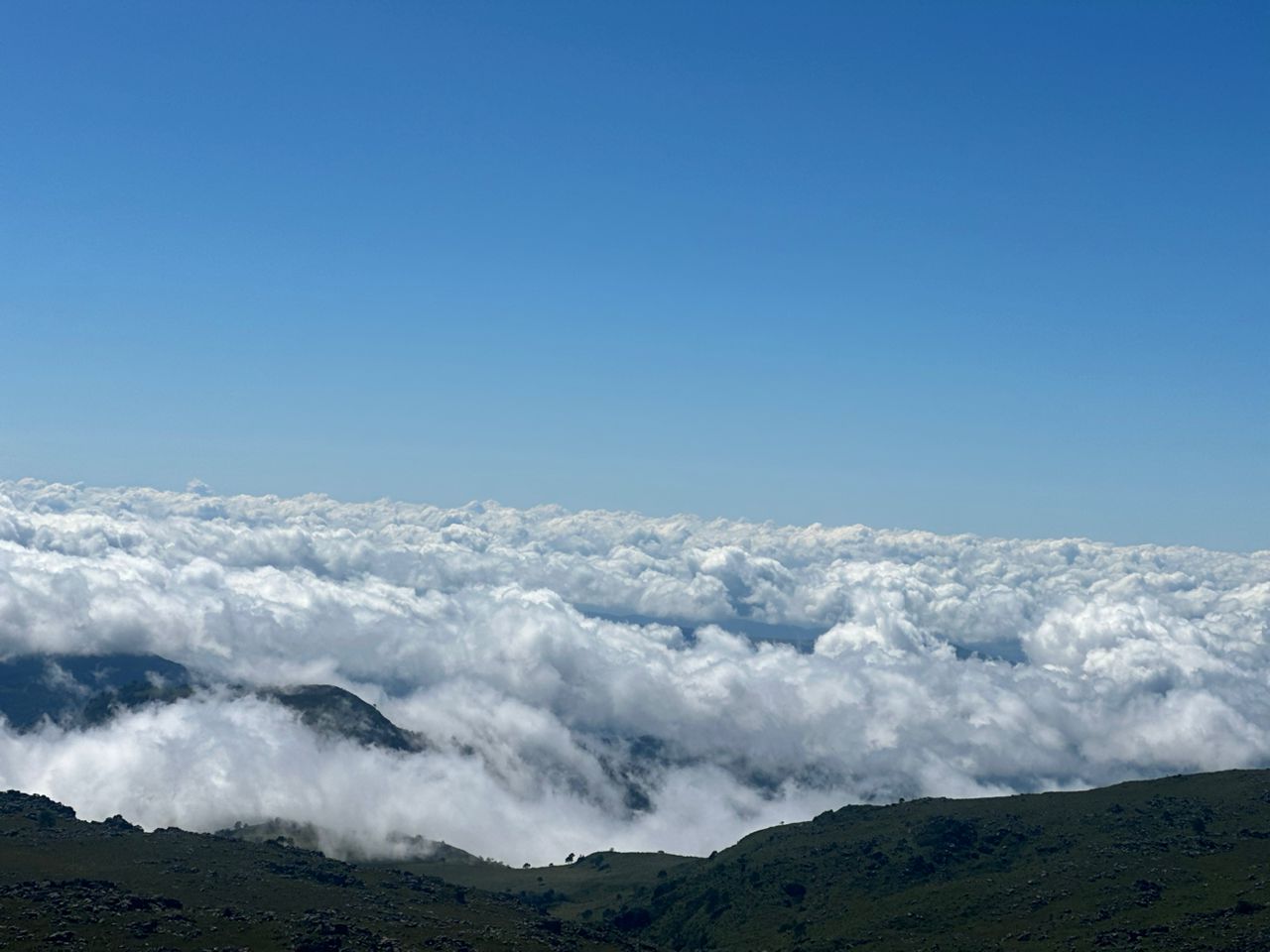Ever been up Mt Nyangani, the highest mountain in Zimbabwe? I have – three times in the last four years! The first time I went up the mountain was a few months after I completed chemotherapy and wanted to test my strength and challenge myself. The second time, a year later, was because I was part of a group that wanted to go up the mountain as part of a fun adventure. The third time- a few weeks ago was because I felt I needed to challenge myself again and enjoy it. And it was during this latest experience that I was quite sentimental and in my feels.

As I celebrate four years in cancer remission today, I wish to use this Mt Nyangani experience as an analogy, and I’m sure it’s something quite relatable to some.
- To reach the foot of the mountain, after you pick your tour guide from the National Parks office, it will take up to 45 minutes. I liken this to the cancer symptoms that we travel with on the journey to diagnosis. The tour guide represents the doctor that we carry but largely ignore because he is somewhat useless at that point in time – because of the comfort of the vehicle we’ll be traveling in, and do not need much guidance.
- At the foot of the mountain is a plaque that highlights the height of the mountain- 2,593m/8,508ft. – I liken this with the moment that one is diagnosed with cancer. The 2,593 figure looks insurmountable before you embark on the climb. You certainly feel like you won’t make it…
- Stage 1 is quite painful to conquer as the body will be trying to adjust to the workout. It’s slightly steep…So it is when you start chemotherapy- it’s a tough process as the appetite disappears and throwing up happens all day everyday.
- At stage 2, the mountain somewhat flattens and you are settling in to the climb – so it is with chemotherapy, once you have accepted the diagnosis and start treatment, you’re on a roll.
- At stage 3 of the climb is a beautiful spring water spot. It makes you want to sing the song, “Mvura yechitubu inoti tonho ichipedza nyota…” the climb is starting to get intense and the cold water stop is more than refreshing… in cancer treatment this is where you get more supplements to aid the treatment process and boost your immune system – iron tablets, painkillers, an improved diet etc.
- And then stage 4 and 5 of the climb are the most difficult. The mountain becomes quite steep and the rocky path doesn’t make things any easier. It’s at this point that most climbers want to give up and go back to the foot of the mountain. It’s a test of strength and the climb feels like endless squats!!! – in cancer, this is where the treatment side effects kick in. It’s when the body screams for a break – in my case I can liken it to when I had to stop treatment and spend time in hospital for blood transfusion.
This is where you totally lose your sense of taste, where diarrhoea kicks in on one day and constipation the next, where the pain increases and you’re put on morphine, or, in my case, a graduation to pethedine! The tour guide at this point tries to distract you by telling you more stories about the mountain and urging you on to see a better view. The guide here represents the oncologists who do their best to motivate their patients to keep going, telling them that the side effects are just but a part of the process. This is a difficult phase!!
- The mountain somewhat flattens at stage 6 and stage 7. Here you have gone round and round and, as the saying goes, “Kukwira gomo hupoterera,” you can’t even see the foot of the mountain or where the cars are parked. When you do catch a glimpse of them, they look like tiny dots…. In cancer this is the time you realise how far you have come. Looking back you momentarily forget the pain of the last cycle or the dreadful nights in hospital. It’s a time where you know you can and you will keep fighting.
- As you approach the top of the mountain, there is a space written “To beacon,” and your energy is revived. You can see the beacon in the distance and it looks closer than it actually is. But the guide keeps telling you you’re almost there and the worst is over. And so you trudge on… in cancer this is when you’re almost done with treatment and the doctor makes it seem like 10 more radiotherapy, out of 40 sessions, or 3 more chemo cycles, out of 12, are nothing- because you’ve come a long way! And so you diligently follow through with the medication.
- And then you get to the beacon, after a full two and a half hours! Your body forgets the pain of the climb and your heart is full at having conquered Zimbabwe’s highest peak! The greatest spectacle other than being at the top is sitting among the clouds, could anything be more beautiful??!!…. This I can liken to the completion of treatment. The huge sigh of relief, the excitement and the feeling of joy. I remember dressing up for my last radiotherapy and chemotherapy sessions – I was quite relieved, though exhausted.
- The descent from the mountain is another test of strength of one’s knees. It’s indeed a slippery and rocky slope, and one has to be careful and watch their step…. The end of treatment does not equate to the end of cancer, but means the continuation of the journey. The journey back to bottom of the mountain is like a journey back to health, and watching one’s step means watching one’s diet, exercise, mental health, lifestyle etc. This is the remission journey. You’re not quite out of the mountain as this is the period where the cancer may come back and force you back up the mountain. The “pit stop” at the springs represents further relief and a chance to relax. Here, our feet were burning from the descent and the cool water dissipated the discomfort before we continued.
The guide still represents the doctors who continue with their work, ensuring you’re well and taking all necessary precautions against cancer recurrence. On your way down you’ll meet other climbers and these represent other cancer patients for whom it is your responsibility to motivate and share your experience. Those that go up the mountain with you represent your support system – family, friends, medical personnel etc, for without whom the journey would have been next to impossible. Back at the foot of the mountain you go back to that plaque and congratulate yourself for having been so brave and been such a sport. The guide keeps telling you how easy the climb was but your body tells a different story.
So I liken the journey back to the National Parks office to drop off the tour guide to this my final year of remission and journeying towards being declared cancer free. I will not drop my doctors as they have become friends of mine, but I will be dropping the monthly tests and injections- allowing them space to “guide” others up the mountain. Until then, I remain grateful to The Almighty for this second chance at life and I will not take any day for granted, and above all, it is important to keep moving forward. Here’s to all cancer patients, caregivers, support structures, cancer survivors and to those that have gone before us.



